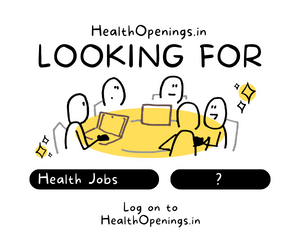In recent years, the convergence of technology and medicine has given rise to revolutionary advancements that are reshaping the landscape of healthcare education, training, and therapeutic interventions. Among these technological marvels, Virtual Reality (VR) and Augmented Reality (AR) stand out as dynamic tools that hold the promise of transforming the way medical professionals learn, train, and provide patient care. In this article, we delve into the profound impact of VR and AR on medical training and therapy, exploring their benefits, applications, case studies, challenges, and future prospects.
Benefits of VR/AR in Medical Training and Education
Traditional medical education often relies on textbooks, lectures, and hands-on experiences. However, these methods may not always provide the optimal learning environment for complex surgical procedures, intricate anatomical understanding, and real-time diagnostic decision-making. VR and AR offer an alternative avenue, creating immersive, interactive, and highly engaging experiences for medical students and professionals.
Through VR, medical students can be transported to a virtual operating room, where they can practice surgeries and procedures in a controlled and safe environment. This empowers them to make mistakes, learn from them, and refine their techniques without any risk to patients. Additionally, anatomy lessons become more captivating as students can explore 3D models of the human body, dissecting and examining structures with a level of detail that traditional methods cannot replicate.
AR complements the surgical realm by overlaying diagnostic information onto a surgeon’s field of view during procedures. This real-time augmentation provides critical data, such as patient vital signs and imaging, without the need to divert attention to separate screens. Surgeons can make more informed decisions and execute procedures with greater precision, potentially reducing surgical complications and improving patient outcomes.
Examples of VR/AR Applications
The integration of VR and AR in medical training and therapy has opened up a myriad of possibilities. For instance, surgeons can utilize VR simulations to rehearse intricate surgeries before embarking on the actual procedure. This practice not only boosts their confidence and competence but also minimizes the potential for errors. Similarly, AR can play a vital role in medical education, such as projecting interactive anatomical models in lecture halls, allowing students to delve into the human body with unprecedented clarity.
Furthermore, the realm of patient care has witnessed transformative applications of AR. For example, during a surgical procedure, AR can overlay visualizations of internal organs, making it easier for surgeons to navigate complex anatomical structures. This real-time guidance can be particularly valuable in minimally invasive surgeries, enhancing the surgeon’s spatial awareness and accuracy.
Case Studies of Improved Learning and Patient Outcomes
Numerous medical institutions have embraced VR and AR, reporting remarkable improvements in both learning outcomes and patient care. At the Stanford University School of Medicine, researchers conducted a study where medical students trained in a VR environment exhibited a 20% improvement in anatomical knowledge retention compared to their traditional counterparts. This not only underscores the efficacy of VR in enhancing learning but also suggests the potential for accelerated knowledge acquisition.
Furthermore, the implementation of AR-assisted surgeries has led to reduced medical errors and enhanced patient safety. A study published in the Journal of the American Medical Association highlighted that surgeons who used AR visualization during laparoscopic procedures achieved higher precision and completed tasks more efficiently compared to those who relied solely on traditional methods.
Challenges and Future Prospects
Despite the remarkable progress, the widespread adoption of VR and AR in medical training and therapy does face challenges. Technical requirements, including high-performance hardware and software, can be barriers, particularly for resource-constrained healthcare institutions. Additionally, the creation of specialized content tailored to medical education and practice demands a significant investment of time and resources.
However, the future prospects for VR and AR in healthcare remain promising. As technology continues to advance, hardware is likely to become more accessible and affordable. Moreover, the development of user-friendly content creation tools will democratize the process of generating tailored VR and AR experiences. These advancements will pave the way for broader integration and utilization of these technologies, ultimately leading to more effective medical training and improved patient care.
Conclusion
Virtual Reality and Augmented Reality are not just buzzwords; they are catalysts for a transformative shift in medical education, training, and therapeutic interventions. The immersive and interactive experiences offered by VR and AR empower medical professionals to hone their skills, make informed decisions, and provide better patient care. From simulated surgeries to real-time AR overlays, these technologies are reshaping the healthcare landscape, driving increased confidence in medical students, reduced medical errors, and enhanced patient outcomes.
While challenges exist, including technical constraints and content creation complexities, the continued evolution of technology and the growing ecosystem of VR and AR development hold the promise of overcoming these hurdles. As we stand on the threshold of a new era in healthcare, one thing is clear: Virtual Reality and Augmented Reality are not mere tools; they are integral components of a more immersive and effective future for medical training and therapeutic interventions.




